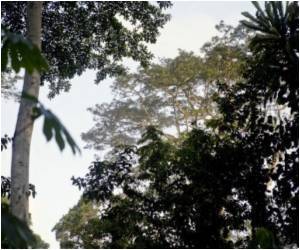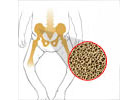A ship dumping iron into the Southern Ocean has shown a technique that could be used as a cure for climate change.

A trial, called Eifex, has been hailed a success, after a bloom of plankton sank 1,000 metres below the ocean, taking with it carbon dioxide.
At present, the technique could only be used to "mop up" around a tenth of global carbon emissions - but scientists continue to investigate.
"We were able to prove that over 50 per cent of the plankton bloom sank below 1000 metre depth indicating that their carbon content can be stored in the deep ocean and in the underlying seafloor sediments for time scales of well over a century," the Daily Mail quoted Prof. Victor Smetacek from the Alfred Wegener Institute for Polar and Marine Research in the Helmholtz Association, as saying.
Previous experiments which aimed to "bind" carbon in this way failed.
"Such controlled iron fertilization experiments in the ocean enable us to test hypotheses and quantify processes that cannot be studied in laboratory experiments. The results improve our understanding of processes in the ocean relevant to climate change," Smetacek said.
Advertisement
The ocean iron fertilization (EIFEX) experiment has shown that a substantial proportion of carbon from the induced algal bloom sank to the deep sea floor.
Advertisement
An international team on board the research vessel Polarstern fertilized in spring 2004 (i.e. at the end of the summer season in the southern hemisphere) a part of the closed core of a stable marine eddy in the Southern Ocean with dissolved iron, which stimulated the growth of unicellular algae (phytoplankton).
The team followed the development of the phytoplankton bloom for five weeks from its start to its decline phase.
The maximum biomass attained by the bloom was with a peak chlorophyll stock of 286 Milligram per square metre higher than that of blooms stimulated by the previous 12 iron fertilization experiments.
According to Smetacek, this was all the more remarkable because the EIFEX bloom developed in a 100 metre deep mixed layer which is much deeper than hitherto believed to be the lower limit for bloom development.
The bloom was dominated by diatoms, a group of algae that require dissolved silicon to make their shells and are known to form large, slimy aggregates with high sinking rates at the end of their blooms.
These results contrast with those of the LOHAFEX experiment carried out in 2009 where diatom growth was limited by different nutrient conditions, especially the absence of dissolved silicon in the chosen eddy.
Instead, the plankton bloom consisted of other types of algae which, however, have no protective shell and were eaten more easily by zooplankton.
The study has been published in the journal Nature.
Source-ANI












